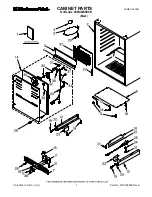
Slight effervescence in still wine- this isn’t really a problem with
the way the wine has been stored, but as a result of incomplete
malolactic fermentation before the wine was bottled. A good way to
get rid of the effervescence is to let the wine breathe. Alternatively
you can use a bottle vacuum device, after about five minutes the
effervescence will vanish.
Sediment- this is not normally a problem, however both red and
white wines can produce sediment after a number of months in a
bottle. The sediment consists of tartrate crystals and is totally
harmless. If anything the building of sediment can be considered a
good sign because it means that the wine was not subjected to much
(if any) filtering, meaning that the flavours and aromas should be
preserved better.
A good way to get around sediment (if it is a problem) is to stand the
bottle upright, the day before opening, so that the sediment can settle
to the bottom of the bottle.
You can also decant your wine; decanting will “open up” the flavour of
both young and old wines, but younger wines in particular. To decant,
pour the wine slowly and evenly into your decanter.
Cleaning and maintenance
WARNING: PLEASE ENSURE THAT YOUR
APPLIANCE IS DISCONNECTED FROM
YOUR MAINS SUPPLY BEFORE
ATTEMPTING TO CLEAN IT.
16
o
Do not clean the appliance by pouring water onto
it or spraying water over it.
o
The interior of the wine cabinet should be cleaned
periodically, using a solution of bicarbonate of soda
and lukewarm water.
o
Clean the accessories separately with soap and water.
Do not clean them in a dishwasher.
o
Do not use abrasive products, detergents or soaps.
Summary of Contents for BWC600SS
Page 1: ...BWC600SS 60 cm 46 Bottle dual temperature wine cabinet...
Page 29: ...29...
Page 30: ...30...
Page 31: ...31...
Page 32: ......
















































